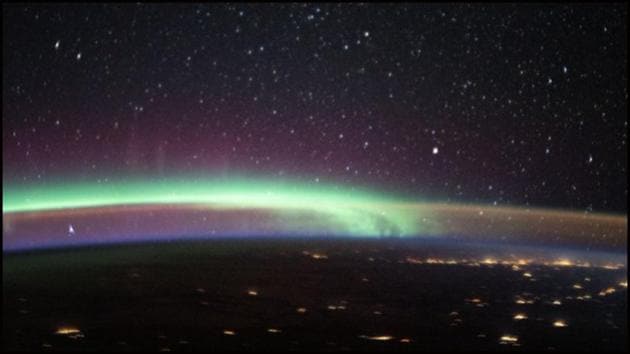World Photography Day 2020: Aurora meets airglow in NASA’s spectacular throwback picture
Photography Day: Ever yearned to see the Northern Lights from space? NASA fulfilled that wish for sky lovers on World Photography Day 2020 as it shared a breathtaking view of ‘Earth’s most colourful upper atmospheric phenomena’ when ‘aurora and airglow met just before dawn’
Sky gazers and space lovers woke up to a treat from National Aeronautics and Space Administration on World Photography Day as the US space agency shared a spectacular throwback picture of when aurora met airglow above the Earth before dawn. It was taken by a member of the Expedition 62 crew on March 16, 2020, with a Nikon D5 digital camera using a 50 millimeter lens.

The camera and lens for capturing the view was provided by the ISS Crew Earth Observations Facility and the Earth Science and Remote Sensing Unit, Johnson Space Center. NASA shared the breathtaking view on their social media handle and elaborated in the caption, “Aurora, meet airglow Two of Earth’s most colorful upper atmospheric phenomena, aurora and airglow, met just before dawn in this March 16 photo shot by an astronaut on the International Space Station (@iss)” sic.
The picture features a blanket of green, wine and yellow coloured lights enveloping the citylights on the Earth below. NASA added, “Wavy green, red-topped wisps of aurora borealis appear to intersect the muted red-yellow band of airglow as the station passed just south of the Alaskan Peninsula. The rising Sun, behind Earth’s limb at the time of this photo, adds a deep blue to the horizon. Light from cities in British Columbia and Alberta, Canada, joins starlight to dot the early morning skyscape.”
As per the space agency, the aurora and airglow are produced by different physical processes even though they appear at similar altitudes. Helping netizens distinguish between the two phenomena, NASA highlighted, “Nighttime airglow (or nightglow) is a type of chemiluminescence—the emission of light from chemical interactions between oxygen, nitrogen, and other molecules in the upper atmosphere. Airglow occurs all around the Earth, all the time. However, “nightglow” is much easier to spot over a dark Earth than “dayglow,” as airglow is just one billionth as bright as the Sun. Auroras, on the other hand, stem from interactions between solar energy and Earth’s magnetic field. The magnetic field funnels the energy into the upper atmosphere, where it interacts with the same atoms as airglow (mainly oxygen and nitrogen). This is why both phenomena can produce similar colors. The dynamic nature of Earth’s magnetic field moves the solar energy in irregular ways, causing each aurora event to be visually unique.”
The theme of World Photography Day 2020 is ‘pandemic lockdown through the lens’. NASA’s picture worked as a perfect breather to brush aside our mid-week blues






